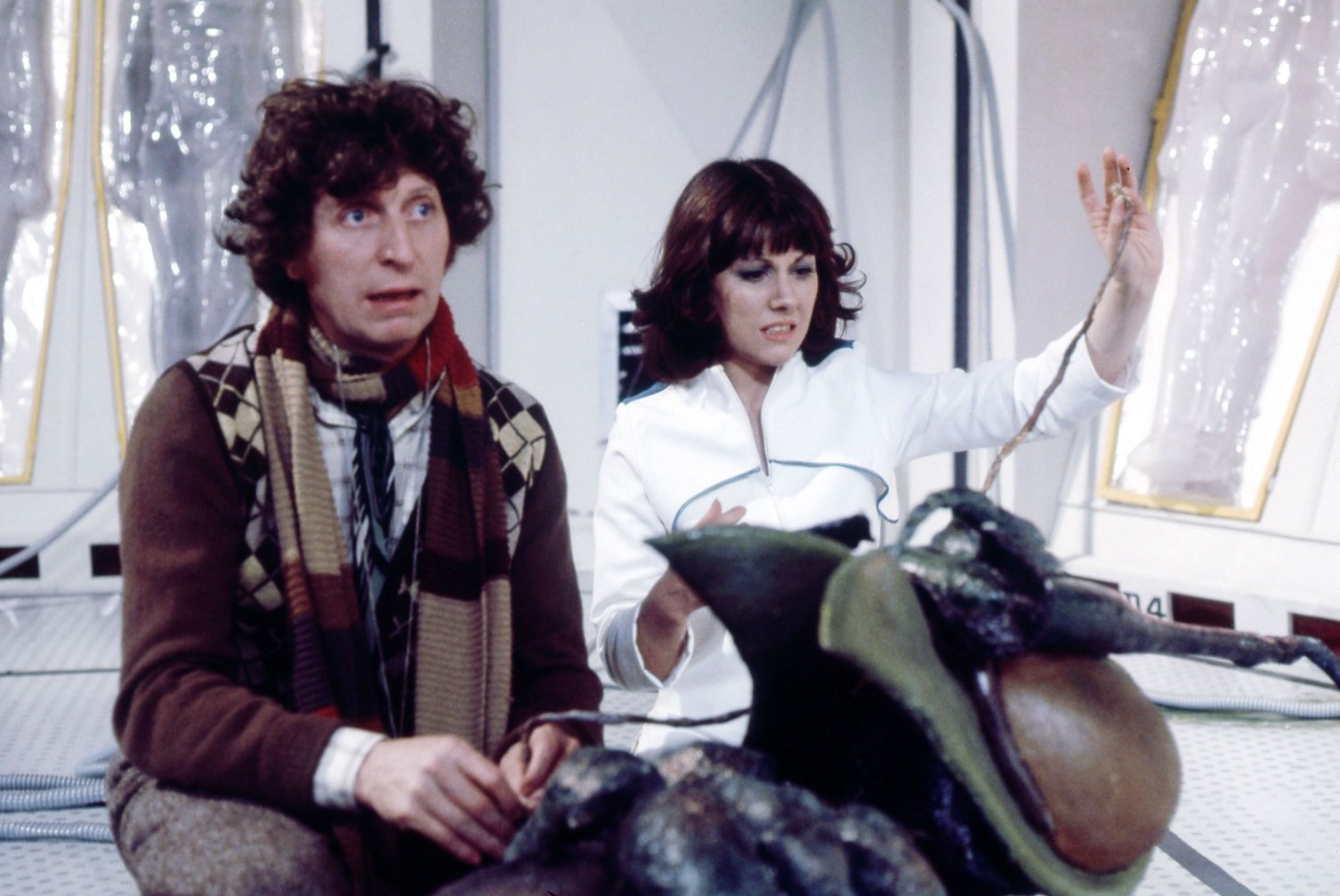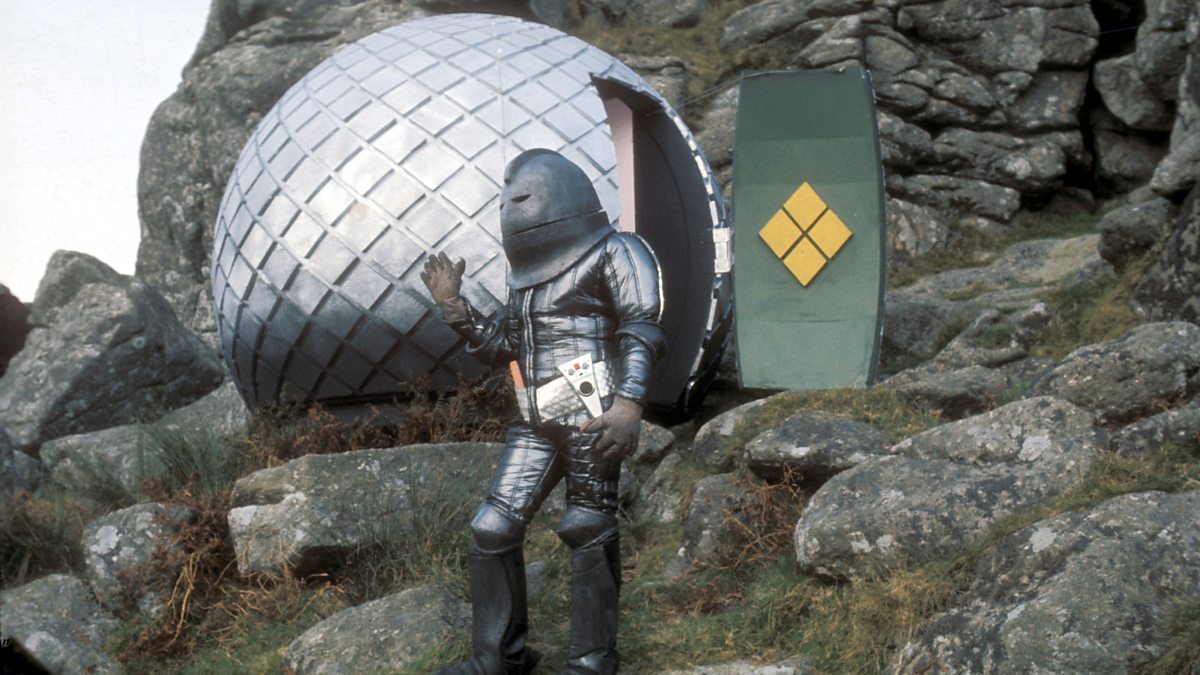RODNEY BENNETT RIP – TOM BAKER ERA DIRECTOR DIES AGED 81

The director Rodney Bennett, who was behind three memorable early Tom Baker stories and whose work outside of the show included many classic dramas has died peacefully aged 81.

Bennett was brought on board at a time during which the show underwent a great stylistic change. Tom Baker’s debut, Robot (1975) was very much a continuation of Jon Pertwee’s era in terms of look and personnel but the very next story The Ark in Space (1975) found the show embracing a gutsier approach, one not afraid of the horrific and psychologically terrifying. Shot on stark, white, clinical sets it concerns the survivors of a futuristic society – who have abandoned the Earth due to the threat of solar flares – under threat from the Wirrn. These deadly wasp-like creatures bury their eggs in cryogenically suspended humans and infect the space ark’s commander Noah. One scene, in which Noah – mid-transformation into a Wirrn – begs his lover Vira to kill him, was cut by producer Philip Hinchcliffe prior to transmission as he deemed it too unsettling.

The Ark in Space is generally acknowledged as one of the show’s true classics (both Russell T Davies and Steven Moffat have sung its praises) and, in one scene – shot from above – in which the Doctor celebrates mankind‘s indomitability, provides the fourth Doctor with one of his defining moments. “I wish we could have got a camera even higher because then it would have been like killing two birds with the same stone – Tom taking on the human race and conveying the size [of the Ark]. But because of the lighting rig higher than that we couldn’t go,” Rodney lamented when I visited him and his lovely wife Jill at their home in Bath in 2013. Despite the restrictions of the studio the scene is still one of the series’ finest.

The Sontaran Experiment (1975), Baker’s third story, was actually shot before The Ark in Space, entirely in location and – unusually for exterior work – on videotape. Disaster struck when the leading man broke his collarbone but the show went on. The bleak locale makes from a suitably post apocalyptic setting and the decision to give the surviving humans South African accents is a smart one which provides plausibility and verisimilitude. Even though Baker was in pain because of his injury the director was a great fan of his leading man describing him as “A wonderful mixture of Burt Lancaster and Harpo Marx – the physical size and strength of Burt Lancaster and then that wonderful smile and childlike aspect of Harpo Marx – which seemed to me a wonderful polarity, or duality, of Tom’s Doctor Who.”

Rodney’s final story The Masque of Mandragora (1976) also features Tom Baker and his sidekick Elisabeth Sladen. “Elisabeth Sladen was amongst the gamest actors I ever worked with. I think she was absolutely lovely and a perfect foil for the Doctor”. The Masque of Mandragora is a gorgeous period drama with a fine cast (the young Tim Pigott- Smith makes a good account of himself and Jon Laurimore has a fine times as the villainous Count Federico) with the Welsh village of Portmerion standing in for Renaissance Italy. “There was so much experience and talent [at the BBC at the time]: the costumes that Jim Acheson put together would grace any feature film. And the wigs were very good too.”
Having done student theatre whilst studying at Cambridge, Rodney Bennett started at the BBC in radio – producing material for the World Service and the Third Programme. When BBC 2 he applied for an attachment to the schools’ department and began to learn the craft of directing with a camera. Some years later he moved to the plays department he got a break directing Z-Cars when the scheduled director fell ill and Rodney happened to be around. He acquitted himself well and stayed with the Serials Department for another 6 months, doing more Z-Cars and some plays for Innes Lloyd’s 30 Minute Theatre. After that Bennett decided to take the plunge and go freelance – a risk which paid off as he enjoyed success on both major channels.
When the BBC embarked upon their major series of every Shakespeare play, it was Bennett to whom they entrusted the key production of Hamlet (1980) in which he cast Derek Jacobi, Patrick Stewart and Lalla Ward (fresh from playing Romana). “I interviewed lots of young actresses for that role. I was very keen at one stage on Zoe Wanamaker. But Lalla was charming.”
His eye for casting would have an even more enduring impact when he met “lots of very nice actresses” for a vital role in his production of The Darling Buds of May (1993). “I decided I would look through the whole of Spotlight from beginning to end including the quarter pages [the cheaper end pages at the back with smaller pictures]. I began at the As at about 9 o’clock and at about 6.30/7, there among the Zs I saw what looked like a holiday snap of a very pretty girl. It too a bit of convincing the producers that she was the one for the part because I don’t think she’d done much television”. But convinced they are and the young woman languishing in the Zs – who was called Catherine Zeta Jones – became a star over night in the ratings hit which also starred David Jason and Pam Ferris.
The production he enjoyed making the most was Monsignor Quixote (1987), filming in Spain with a fine cast headed by Alec Guinness and Leo McKern. The Lost Boys, about JM Barrie, was a less comfortable production to make but one in which Ian Holm gave “an extraordinary performance”. It was a complicated production but he was very happy with the end result (which won awards internationally).
His other productions included North and South (BBC 1975), Madame Bovary (BBC 1976), The Legend of King Arthur (Maureen O’Brien was Morgan Le Fay, 1979), Sense and Sensibility (a981), Dombey and Son (with Julian Glover 1983), and episodes of such favourites as Rumple of the Bailey (1987), The House of Elliott (1991), Soldier Soldier (1993, 93) and Dr Finlay (1996).
When I visited him he faced his mobility difficulties with a quiet stoicism, and he and Jill were extremely hospitable. He was gentle and charming and blessed with that perfect diction of the old school. He was still friends with Maureen O’Brien whom I contacted when I learned of his death: “Darling Rodney. Such a lovely man and such a sensitive and responsive and kind director,” she told me. “He went on writing his kids’ adventure stories right to the end, you know? Such courage and determination in a man who seemed too gentle for such persistence. Quiet, very English people like Rodney of such special talent can get easily overlooked.”
Two BAFTA nominations (for Monsignor Quixote and The Legend of King Arthur) and three top tier Doctor Who stories will hopefully mean that Rodney and his work will be remembered for a long time to some. And so will the fact that he was a very nice fellow indeed.
Rodney Bennett, Television director, born March 1935, died January 2017.